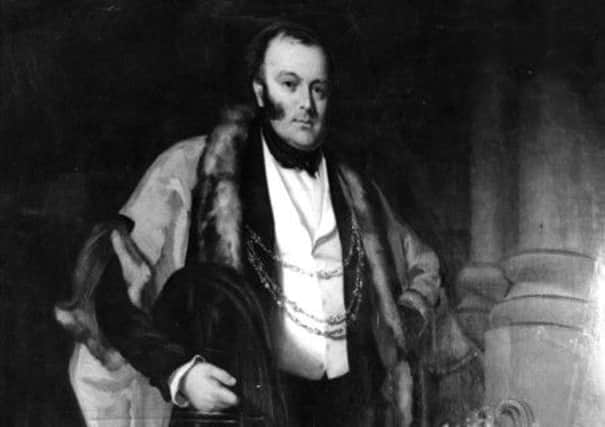Rise and fall of Yorkshire’s ‘Railway King’


Nevertheless, he was instrumental in providing York with an early link to Leeds and the Midlands, while retaining a long-term ambition of joining York with London and later Edinburgh. Hudson was also part of one of the 19th century’s biggest scandals after irregularities in his business dealings were discovered, leading to his disgrace.
Hudson was born at Howsham in early 1800, the son of a tenant farmer. In his mid-teens, he began an apprenticeship at Bell & Nicholson, College Street, York, as a linen draper. Upon completion of this in 1821, Hudson was awarded a share in the business. Six years later Hudson’s great uncle left £30,000 and land to him, which improved his immediate prospects.
Advertisement
Hide AdAdvertisement
Hide AdLocal politics appealed to him. He was made Treasurer of the York Conservative Party, and later joined York Health Board. In this latter role he was particularly noted for visiting cholera victims in 1832. During this year he was also part of a group that formed the York Union Bank.
In 1833 several local businessmen came together to try to link York with Leeds by rail. There was initially scepticism, even from Hudson, that this would be worthwhile given York’s size and lack of heavy industry. At first the project was held in abeyance, but when several independent lines from London to the Midlands came near to completion the importance of such a railway soon became clear.
In 1835 the York & North Midland Railway was formed to construct a line to Leeds and Normanton, where a connection would be made with the North Midland Railway and the track to London. The Act for the scheme was authorised in 1836 and it was estimated to cost £370,000. Hudson invested £21,000 and was made chairman of the company, dealing with even the finest of details.
With the land flat, progress on the first section from York to South Milford was swift. The first train ran on May 29 1839 when Hudson was in the second of three terms as Lord Mayor of York.
Advertisement
Hide AdAdvertisement
Hide AdThe final section to Normanton was opened on June 30 1840, meaning travel between London and York in under 12 hours was a reality.
After this success, Hudson sought to further expand his rail interests and limit the competition from other lines. The Y&NMR expanded east to Scarborough, Pickering and Whitby, while the Hull & Selby Railway was leased to secure revenues from freight traffic to Hull and reduce competition.
Hudson brought his schemes, to fruition through the promise of high share dividends (around 10 per cent when much less was average at the time), leaving the majority of shareholders happy to agree to his plans.
Next was the route north. Lines were leased and companies bought in order to thwart the rival west coast railway companies from reaching Scotland before him. The York, Newcastle & Berwick Railway was the resultant company and engineering projects completed for it were the High Level Bridge over the Tyne, Royal Border Bridge and Newcastle station.
Advertisement
Hide AdAdvertisement
Hide AdIn the early 1840s he oversaw combining the NMR, Birmingham & Derby Junction and Midland Counties Railway to form the Midland Railway, at the time the largest railway company in Britain.
The struggling Eastern Counties Railway, serving parts of East Anglia, came into his sights in an attempt to halt the progress of the London & York Railway, later Great Northern, by providing an eastern route to York. The company was a real threat to the MR and Hudson’s monopoly of the route from London to Edinburgh via the Midlands. This move ultimately failed and the GNR line was a real blow to Hudson.
In several of the companies Hudson had been involved with, questions had been raised about the finances and his methods, but he had managed to shrug them off. At a meeting of the Y&NM in early 1849, however, a shareholder produced evidence that he had abused his position to profit substantially.
Moves were quickly made to oust him from his boardroom roles and inquiries into his conduct began. He was exonerated of any wrongdoing with the MR and was only slightly at fault with the MCR. Yet the Y&NM and the YN&BR found serious abuses of power, including embezzlement of considerable sums and conflicts of interest relating to share purchases.
Advertisement
Hide AdAdvertisement
Hide AdHudson repaid much of the money almost immediately, so legal action was largely avoided, but the Y&NM pursued him and recovered over £70,000 in 1853.
Hudson sold properties and land, amounting to about 16,000 acres, leaving him in near destitution. Large parts of the rest of his life were spent on the continent to avoid creditors, but he did manage to return shortly before his death in December 1871.
Prior to this, in recognition of his services to the railways, collections taken in London, Yorkshire and the north east to provide him with a pension raised £6,000.